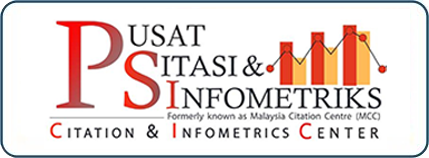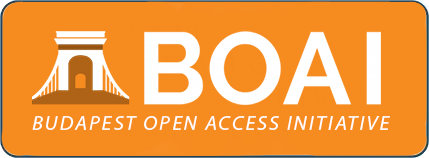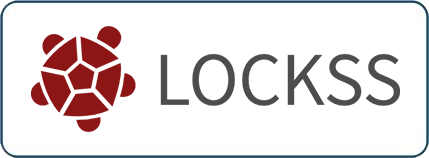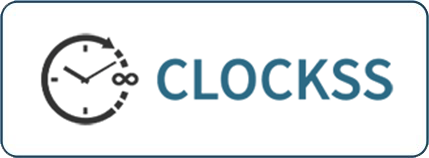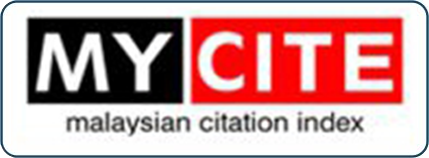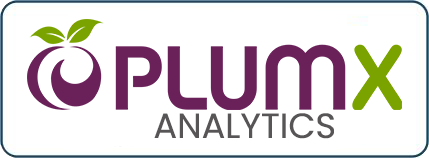Microbial Diversity in Landfills through Metagenomics Profiling: A Review
DOI:
https://doi.org/10.33102/mjosht.487Keywords:
Microbial diversity, Landfill, Metagenomics, Bioinformatics, Whole-Genome Shotgun (WGS)Abstract
Microbial communities are play a crucial role in the breakdown of organic waste, the production of biogas, and the reduction of environmental impact at landfills, which are complex ecosystems more than just places to dispose of waste. This study provides a comprehensive overview of the current knowledge of microbial diversity in landfills based on metagenomics studies. Metagenomics studies show that various microorganisms, including bacteria, archaea, and fungi, are found in landfills and interact to break down waste. Environmental factors such as pH, temperature, and waste composition impact these microbial communities. This review investigate how landfill age, waste composition, and operational methods impact microbial communities. Important microbial group functions in the waste breakdown, greenhouse gas emission, and soil leachate composition are also highlighted in this paper. The review examine how technologies, such as bioinformatics tools and high-throughput sequencing, enhance our knowledge of the landfill microbiome. Through metagenomics, researchers can identify the microbial genes responsible for important activities, including pollution bioremediation, production of methane, and organic matter breakdown. High-throughput sequencing methods such as 16S rRNA sequencing and shotgun metagenomics have improved the current understanding of landfill microbiomes by identifying new microbes with specialized metabolic roles. Identifying the plastic-degrading microbes and their enzymes is an emerging area of interest with potential for that may help develop biotechnological solutions to landfill plastic pollution. Metagenomics provides the opportunity to develop sustainable landfill management techniques and microbial-based waste treatment methods by identifying these microbial processes. This review emphasis the need of using the microbial processes for a better waste management and the significance of metagenomics in optimising landfill operations.
Downloads
References
Mishra, P., SINGP, N., Shrama, C., & Pathak, A. K, “Landfill emissions and their impact on the environment,” International Journal of Engineering Research & Technology, vol. 9, August 2020. https://doi.org/10.17577/IJERTV9IS080187
Sekhohola‐Dlamini, L., Selvarajan, R., Ogola, H. J. O., & Tekere, M., “Community diversity metrics, interactions, and metabolic functions of bacteria associated with municipal solid waste landfills at different maturation stages,” Microbiologyopen, vol. 10, March 2025. https://doi.org/10.1002/mbo3.1118
Meyer-Dombard, D. A. R., Bogner, J. E., & Malas, J. “A review of landfill microbiology and ecology: a call for modernization with ‘next generation’technology,” Frontiers in Microbiology, vol. 11, June 2020. https://doi.org/10.3389/fmicb.2020.01127
Mutungwazi, A., Nyamukamba, P., Mukumba, P., & Makaka, G, “Use of a portable greenhouse for temperature76 control in a small-scale biogas production unit,” Int. J. Renew. Energy Res, vol. 10, September 2020. https://doi.org/10.1093/lambio/ovac030
Adeleke, B. S., Muller, D., & Babalola, O. O. “A metagenomic lens into endosphere microbial communities, promises, and discoveries,” Letters in Applied Microbiology, vol. 76, February 2023. https://doi.org/10.1093/lambio/ovac030
Grossart, H., Massana, R., McMahon, K. D., & Walsh, D. A. (2019). Linking metagenomics to aquatic microbial ecology and biogeochemical cycles. Limnology and Oceanography/˜the œL & O on Cd-rom, 65(S1). https://doi.org/10.1002/lno.11382
Hug, L. A., Baker, B. J., Anantharaman, K., Brown, C. T., Probst, A. J., Castelle, C. J., Butterfield, C. N., Hernsdorf, A. W., Amano, Y., Ise, K., Suzuki, Y., Dudek, N., Relman, D. A., Finstad, K. M., Amundson, R., Thomas, B. C., & Banfield, J. F, “A new view of the tree of life,” Nature Microbiology, vol. 65, April 2016. https://doi.org/10.1038/nmicrobiol.2016.48
González-Cortés, J. J., Valle, A., Ramírez, M., & Cantero, D, “Characterization of bacterial and archaeal communities by DGGE and Next Generation Sequencing (NGS) of nitrification bioreactors using two different intermediate landfill leachates as ammonium substrate.” Waste and Biomass Valorization, vol. 13, April 2022. https://doi.org/10.1007/s12649-022-01759-0
Vaverková, M. D. “Landfill impacts on the environment,” Geosciences, vol. 9, October 2019. https://doi.org/10.3390/geosciences9100431
Remmas, N., Manfe, N., Zerva, I., Melidis, P., Raga, R., & Ntougias, S. “A critical review on the microbial ecology of landfill leachate treatment systems,” Sustainability, vol. 15, January 2023. https://doi.org/10.3390/su15020949
Li, D., Zhang, Y., Yu, F., Wang, J., Zhang, X., Feng, L., Lang, T. and Yang, F., “Vadose-zone characteristic pollutants distribution, microbial community structure and functionality changes in response to long-term leachate pollution of an informal landfill site,” Science of The Total Environment, vol. 948, October 2024. https://doi.org/10.1016/j.scitotenv.2024.174596
Watling, H. “Microbiological advances in biohydrometallurgy,” Minerals, vol. 6, May 2016. https://doi.org/10.3390/min6020049
Buriánková, I., Molíková, A., Vítězová, M., Onderka, V., Vítěz, T., Urbanová, I., Hanišáková, N., Černý, M., Novák, D., Lochman, J. and Zeman, J., “Microbial communities in underground gas reservoirs offer promising biotechnological potential,” Fermentation, vol. 8, May 2022. https://doi.org/10.3390/fermentation8060251
Molíková, A., Vítězová, M., Vítěz, T., Buriánková, I., Huber, H., Dengler, L., Hanišáková, N., Onderka, V. and Urbanová, I., “Underground gas storage as a promising natural methane bioreactor and reservoir?,” Journal of Energy Storage, vol. 47, March 2022. https://doi.org/10.1016/j.est.2021.103631
Steffi, P. F., and Mrs R. Rajeswari Anburaj. "A Textbook on Marine Microbiology." (2020).
Msimbira, L. A., & Smith, D. L., “The roles of plant growth promoting microbes in enhancing plant tolerance to acidity and alkalinity stresses,” Frontiers in Sustainable Food Systems, vol. 4, July 2020. https://doi.org/10.3389/fsufs.2020.00106
Meng, D., Cheng, H., Shao, Y., Luo, M., Xu, D., Liu, Z., & Ma, L. (2022). Progress on the effect of nitrogen on transformation of soil organic carbon. Processes, 10(11), 2425. https://doi.org/10.3390/pr10112425
Dang, C., Morrissey, E. M., Neubauer, S. C., & Franklin, R. B., “Novel microbial community composition and carbon biogeochemistry emerge over time following saltwater intrusion in wetlands,” Global change biology, vol. 10, December 2018. https://doi.org/10.1111/gcb.14486
Purohit, J., Chattopadhyay, A., & Teli, B. “Metagenomic Exploration of Plastic Degrading Microbes for Biotechnological Application,” Current genomics, vol. 21, May 2020 https://doi.org/10.2174/1389202921999200525155711
Sauk, A. H., & Hug, L. A. “High diversity and heterogeneity define microbial communities across an active municipal landfill,” bioRxiv, March 2021. https://doi.org/10.1101/2021.03.26.437222
Piché-Choquette, S., & Constant, P. “Molecular hydrogen, a neglected key driver of soil biogeochemical processes,” Applied and environmental microbiology, vol. 85, March 2019. https://doi.org/10.1128/AEM.02418-18
Niu, J., & Li, X. “Effects of microbial inoculation with different indigenous bacillus species on physicochemical characteristics and bacterial succession during short-term composting,” Fermentation, 8(4), 152. https://doi.org/10.3390/fermentation8040152
Wainaina, S., Lukitawesa, Kumar Awasthi, M., & Taherzadeh, M. J. (2019). Bioengineering of anaerobic digestion for volatile fatty acids, hydrogen or methane production: a critical review. Bioengineered, 10(1), 437-458. https://doi.org/10.1080/21655979.2019.1673937
Harirchi, S., Wainaina, S., Sar, T., Nojoumi, S.A., Parchami, M., Parchami, M., Varjani, S., Khanal, S.K., Wong, J., Awasthi, M.K. and Taherzadeh, M.J., (2022). Microbiological insights into anaerobic digestion for biogas, hydrogen or volatile fatty acids (VFAs): a review. Bioengineered, 13(3), 6521-6557. https://doi.org/10.1080/21655979.2022.2035986
Chukwuma, O. B., Rafatullah, M., Tajarudin, H. A., & Ismail, N. (2020). Lignocellulolytic enzymes in biotechnological and industrial processes: a review. Sustainability, 12(18), 7282. https://doi.org/10.3390/su12187282
Wagg, C., Hautier, Y., Pellkofer, S., Banerjee, S., Schmid, B., & van der Heijden, M. G. (2021). Diversity and asynchrony in soil microbial communities stabilizes ecosystem functioning. elife, 10, e62813. https://doi.org/10.7554/eLife.62813.sa2
Philippot, L., Griffiths, B. S., & Langenheder, S. (2021). Microbial community resilience across ecosystems and multiple disturbances. Microbiology and Molecular Biology Reviews, 85(2), 10-1128. https://doi.org/10.1128/MMBR.00026-20
Chukwuma, O. B., Rafatullah, M., Tajarudin, H. A., & Ismail, N. (2021). Bacterial diversity and community structure of a municipal solid waste landfill: A source of lignocellulolytic potential. Life, 11(6), 493. https://doi.org/10.3390/life11060493
Wang, X., Cao, A., Zhao, G., Zhou, C., & Xu, R. (2017). Microbial community structure and diversity in a municipal solid waste landfill. Waste management, 66, 79-87. https://doi.org/10.1016/j.wasman.2017.04.023
Stamps, B. W., Lyles, C. N., Suflita, J. M., Masoner, J. R., Cozzarelli, I. M., Kolpin, D. W., & Stevenson, B. S. (2016). Municipal solid waste landfills harbor distinct microbiomes. Frontiers in microbiology, 7, 534. https://doi.org/10.3389/fmicb.2016.00534
Han, P., Teo, W. Z., & Yew, W. S. (2022). Biologically engineered microbes for bioremediation of electronic waste: Wayposts, challenges and future directions. Engineering Biology, 6(1), 23. https://doi.org/10.1049/enb2.12020
Elliott, J. A., Krohn, C., & Ball, A. S. (2024). Diversity of Microbial Communities in Trade Wastes—Implications for Treatments and Operations. Applied Microbiology, 4(2), 682-703. https://doi.org/10.3390/applmicrobiol4020047
Mendoza-Burguete, Y., Pérez-Rea, L., Ledesma-García, J., Campos-Guillén, J., Ramos-López, M. A., Guzmán, C., & Rodríguez-Morales, J. A. (2023). Global Situation of Bioremediation of Leachate-Contaminated Soils by Treatment with Microorganisms: A Systematic Review. Microorganisms, 11(4), 857. https://doi.org/10.3390/microorganisms11040857
Chander, A. M., Singh, N. K., & Venkateswaran, K. (2023). Microbial Technologies in Waste Management, Energy Generation and Climate Change: Implications on Earth and Space. Journal of the Indian Institute of Science, 1 https://doi.org/10.1007/s41745-023-00388-3
Yeon, J., Seong, H. J., An, H., Kim, Y., Yoon, Y., Weon, Y., Kim, J. J., & Ahn, H. (2022). Distinct Bacterial and Fungal Communities Colonizing Waste Plastic Films Buried for More Than 20 Years in Four Landfill Sites in Korea. Journal of Microbiology and Biotechnology, 32(12), 1561. https://doi.org/10.4014/jmb.2206.06021
Hu, Y., Zhou, Z., & Shen, C. (2024). Microbial community acclimation during anaerobic digestion of high-oil food waste. Scientific Reports, 14(1), 25364. https://doi.org/10.1038/s41598-024-77136-9
Vuong, P., Lim, D. J., Murphy, D. V., Wise, M. J., Whiteley, A. S., & Kaur, P. (2021). Developing bioprospecting strategies for bioplastics through the large-scale mining of microbial genomes. Frontiers in Microbiology, 12, 697309. https://doi.org/10.3389/fmicb.2021.697309
Murillo-Roos, M., Uribe-Lorío, L., Fuentes-Schweizer, P., Vidaurre-Barahona, D., Brenes-Guillén, L., Jiménez, I., Arguedas, T., Liao, W. and Uribe, L., (2022). Biogas production and microbial communities of mesophilic and thermophilic anaerobic co-digestion of animal manures and food wastes in Costa Rica. Energies, 15(9), 3252. https://doi.org/10.3390/en15093252
Orlando, M., Molla, G., Castellani, P., Pirillo, V., Torretta, V., & Ferronato, N. (2023). Microbial enzyme biotechnology to reach plastic waste circularity: current status, problems and perspectives. International Journal of Molecular Sciences, 24(4), 3877. https://doi.org/10.3390/ijms24043877
Grzyb, A., Wolna-Maruwka, A., & Niewiadomska, A. (2021). The significance of microbial transformation of nitrogen compounds in the light of integrated crop management. Agronomy, 11(7), 1415. https://doi.org/10.3390/agronomy11071415
Dincă, L. C., Grenni, P., Onet, C., & Onet, A. (2022). Fertilization and soil microbial community: a review. Applied Sciences, 12(3), 1198. https://doi.org/10.3390/app12031198
Mishra, S., Lin, Z., Pang, S., Zhang, W., Bhatt, P., & Chen, S. (2021). Recent advanced technologies for the characterization of xenobiotic-degrading microorganisms and microbial communities. Frontiers in Bioengineering and Biotechnology, 9, 632059. https://doi.org/10.3389/fbioe.2021.632059
Selvarajan, R., Ogola, H., Kalu, C. M., Sibanda, T., & Obize, C. (2022). Bacterial communities in informal dump sites: a rich source of unique diversity and functional potential for bioremediation applications. Applied Sciences, 12(24), 12862. https://doi.org/10.3390/app122412862
Ogola, H. J. O., Selvarajan, R., & Tekere, M. (2021). Local geomorphological gradients and land use patterns play key role on the soil bacterial community diversity and dynamics in the highly endemic indigenous afrotemperate coastal scarp forest biome. Frontiers in microbiology, 12, 592725. https://doi.org/10.3389/fmicb.2021.592725
Deng, J., Yin, Y., Zhu, W., & Zhou, Y. (2018). Variations in soil bacterial community diversity and structures among different revegetation types in the Baishilazi Nature Reserve. Frontiers in Microbiology, 9, 2874. https://doi.org/10.3389/fmicb.2018.02874
Singh, D., Slik, J. W., Jeon, Y., Tomlinson, K. W., Yang, X., Wang, J., Kerfahi, D., Porazinska, D. L., & Adams, J. M. (2019). Tropical forest conversion to rubber plantation affects soil micro- & mesofaunal community & diversity. Scientific Reports, 9(1), 1-13. https://doi.org/10.1038/s41598-019-42333-4
Reynolds, M. C., Finn, D., Sarno, A. F., Allen, R., Deathrage, J. D., Krajmalnik-Brown, R., & Cadillo-Quiroz, H. (2022). Delineating the drivers and functionality of methanogenic niches within an arid landfill. Applied and environmental microbiology, 88(9), e02438-21. https://doi.org/10.1128/aem.02438-21
Naumova, N. B., Belanov, I. P., Alikina, T. Y., & Kabilov, M. R. (2021). Undisturbed Soil Pedon under Birch Forest: Characterization of Microbiome in Genetic Horizons. Soil Systems, 5(1), 14. https://doi.org/10.3390/soilsystems5010014
Shigyo, N., Umeki, K., & Hirao, T. (2019). Seasonal Dynamics of Soil Fungal and Bacterial Communities in Cool-Temperate Montane Forests. Frontiers in Microbiology, 10, 466313. https://doi.org/10.3389/fmicb.2019.01944
Tamburini, E., Doni, L., Lussu, R., Meloni, F., Cappai, G., Carucci, A., Casalone, E., Mastromei, G., & Vitali, F. (2020). Impacts of Anthropogenic Pollutants on Benthic Prokaryotic Communities in Mediterranean Touristic Ports. Frontiers in Microbiology, 11, 536034. https://doi.org/10.3389/fmicb.2020.01234
Fu, Q., Shao, Y., Wang, S., Liu, F., Tian, G., Chen, Y., Yuan, Z., & Ye, Y. (2022). Soil Microbial Distribution Depends on Different Types of Landscape Vegetation in Temperate Urban Forest Ecosystems. Frontiers in Ecology and Evolution, 10, 858254. https://doi.org/10.3389/fevo.2022.858254
Wan, S., Xia, M., Tao, J., Pang, Y., Yu, F., Wu, J., & Chen, S. (2021). Metagenomics Analysis Reveals the Microbial Communities, Antimicrobial Resistance Gene Diversity and Potential Pathogen Transmission Risk of Two Different Landfills in China. Diversity, 13(6), 230. https://doi.org/10.3390/d13060230
Quinteros-Urquieta, C., Francois, P., Aguilar-Muñoz, P., Orellana, R., Villaseñor, R., Moreira-Muñoz, A., & Molina, V. (2024). Microbial Diversity of Soil in a Mediterranean Biodiversity Hotspot: Parque Nacional La Campana, Chile. Microorganisms, 12(8), 1569. https://doi.org/10.3390/microorganisms12081569
Sauk, A. H., & Hug, L. A. (2022). Substrate-restricted methanogenesis and limited volatile organic compound degradation in highly diverse and heterogeneous municipal landfill microbial communities. ISME communications, 2(1), 58. https://doi.org/10.1038/s43705-022-00141-4
Francois, J., Orellana, R., Villaseñor, R., & Molina, V. (2024). Microbial Diversity of Soil in a Mediterranean Biodiversity Hotspot: Parque Nacional La Campana, Chile. Microorganisms, 12(8), 1569. https://doi.org/10.3390/microorganisms12081569
Liu, S., Moon, C. D., Zheng, N., Huws, S., Zhao, S., & Wang, J. (2022). Opportunities and challenges of using metagenomic data to bring uncultured microbes into cultivation. Microbiome, 10(1), 76. https://doi.org/10.1186/s40168-022-01272-5
Roy, N. K., Panda, S., & Dey, G. (2023). Engineering a sustainable protein revolution: Recent advances in cultured meat production. Food Bioengineering, 2(4), 301-316. https://doi.org/10.1002/fbe2.12066
Shekhar, S. K., Godheja, J., & Modi, D. R. (2020). Molecular technologies for assessment of bioremediation and characterization of microbial communities at pollutant-contaminated sites. Bioremediation of Industrial Waste for Environmental Safety: Volume II: Biological Agents and Methods for Industrial Waste Management, 437-474. https://doi.org/10.1007/978-981-13-3426-9_18
Gupta, J., Roy, D., Thakur, I. S., & Kumar, M. (2022). Environmental DNA insights in search of novel genes/taxa for production of biofuels and biomaterials. In Elsevier eBooks (pp. 111–135). https://doi.org/10.1016/B978-0-12-823500-3.00015-7
Akinsemolu, A., Onyeaka, H., Fagunwa, O., & Adenuga, A. H. (2023). Toward a resilient future: the promise of microbial bioeconomy. Sustainability, 15(9), 7251. https://doi.org/10.3390/su15097251
Das, A., Das, S., Das, N., Pandey, P., Ingti, B., Panchenko, V., Bolshev, V., Kovalev, A. and Pandey, P., (2023). Advancements and innovations in harnessing microbial processes for enhanced biogas production from waste materials. Agriculture, 13(9), 1689. https://doi.org/10.3390/agriculture13091689
Chan, A. W., Naphtali, J., & Schellhorn, H. E. (2019). High-throughput DNA sequencing technologies for water and wastewater analysis. Science progress, 102(4), 351-376. https://doi.org/10.1177/0036850419881855
Pérez-Cobas, A. E., Gomez-Valero, L., & Buchrieser, C. (2020). Metagenomic approaches in microbial ecology: an update on whole-genome and marker gene sequencing analyses. Microbial genomics, 6(8), e000409. https://doi.org/10.1099/mgen.0.000409
Willis, J. R., & Gabaldón, T. (2020). The human oral microbiome in health and disease: from sequences to ecosystems. Microorganisms, 8(2), 308. https://doi.org/10.3390/microorganisms8020308
Chandran, H., Meena, M., & Sharma, K. (2020). Microbial biodiversity and bioremediation assessment through omics approaches. Frontiers in Environmental Chemistry, 1, 570326. https://doi.org/10.3389/fenvc.2020.570326
Chin, H. S., Ravi Varadharajulu, N., Lin, Z. H., Chen, W. Y., Zhang, Z. H., Arumugam, S., ... & Yu, S. S. F. (2024). Isolation, molecular identification, and genomic analysis of Mangrovibacter phragmitis strain ASIOC01 from activated sludge harboring the bioremediation prowess of glycerol and organic pollutants in high-salinity. Frontiers in Microbiology, 15, 1415723. https://doi.org/10.3389/fmicb.2024.1415723
Grégoire, D. S., George, N. A., & Hug, L. A. (2023). Microbial methane cycling in a landfill on a decadal time scale. Nature Communications, 14(1), 7402. https://doi.org/10.1038/s41467-023-43129-x
Mydeen, A. K. M., Agnihotri, N., Bahadur, R., Lytand, W., Kumar, N., & Hazarika, S. (2023). Microbial Maestros: Unraveling the crucial role of microbes in shaping the environment. Acta Biology Forum. 02(02) (pp. 23-28). https://doi.org/10.5281/zenodo.8340009
Farda, B., Djebaili, R., Vaccarelli, I., Del Gallo, M., & Pellegrini, M. (2022). Actinomycetes from caves: an overview of their diversity, biotechnological properties, and insights for their use in soil environments. Microorganisms, 10(2), 453. https://doi.org/10.3390/microorganisms10020453
Atanasova, N., Stoitsova, S., Paunova-Krasteva, T., & Kambourova, M. (2021). Plastic degradation by extremophilic bacteria. International Journal of Molecular Sciences, 22(11), 5610. https://doi.org/10.3390/ijms22115610
Zrimec, J., Kokina, M., Jonasson, S., Zorrilla, F., & Zelezniak, A. (2021). Plastic-degrading potential across the global microbiome correlates with recent pollution trends. MBio, 12(5), 10-1128. https://doi.org/10.1128/mBio.02155-21
Ekanayaka, A.H., Tibpromma, S., Dai, D., Xu, R., Suwannarach, N., Stephenson, S.L., Dao, C. and Karunarathna, S.C., (2022). A review of the fungi that degrade plastic. Journal of fungi, 8(8), 772. https://doi.org/10.3390/jof8080772
Zampolli, J., Collina, E., Lasagni, M., & Di Gennaro, P. (2024). Insights into polyethylene biodegradative fingerprint of Pseudomonas citronellolis E5 and Rhodococcus erythropolis D4 by phenotypic and genome-based comparative analyses. Frontiers in Bioengineering and Biotechnology, 12, 1472309. https://doi.org/10.3389/fbioe.2024.1472309
Roberts, C., Edwards, S., Vague, M., León-Zayas, R., Scheffer, H., Chan, G., Swartz, N.A. and Mellies, J.L., (2020). Environmental consortium containing Pseudomonas and Bacillus species synergistically degrades polyethylene terephthalate plastic. Msphere, 5(6), 10-1128. https://doi.org/10.1128/mSphere.01151-20
Mohanan, N., Montazer, Z., Sharma, P. K., & Levin, D. B. (2020). Microbial and enzymatic degradation of synthetic plastics. Frontiers in Microbiology, 11, 580709. https://doi.org/10.3389/fmicb.2020.580709
Coughlan, L. M., Cotter, P. D., Hill, C., & Alvarez-Ordóñez, A. (2015). Biotechnological applications of functional metagenomics in the food and pharmaceutical industries. Frontiers in microbiology, 6, 672. https://doi.org/10.3389/fmicb.2015.00672
Zampolli, J., Orro, A., Vezzini, D., & Di Gennaro, P. (2022). Genome-based exploration of Rhodococcus species for plastic-degrading genetic determinants using bioinformatic analysis. Microorganisms, 10(9), 1846. https://doi.org/10.3390/microorganisms10091846
Ai, B., Mei, Y., Liang, D., Wang, T., Cai, H., & Yu, D. (2023). Uncovering the special microbiota associated with occurrence and progression of gastric cancer by using RNA-sequencing. Scientific Reports, 13(1), 5722. https://doi.org/10.1038/s41598-023-32809-9
Wani, A. K., Ahmad, S., Américo-Pinheiro, J. H. P., Tizro, N., & Singh, R. (2023). Building the taxonomic profile of the Riniaie Marwah hot spring of Kishtwar in Jammu and Kashmir: the first high-throughput sequencing-based metagenome study. Iranian Journal of Microbiology, 15(6), 723. https://doi.org/10.18502/ijm.v15i6.14132
Harrison, K., & Curtin, C. (2021). Microbial composition of SCOBY starter cultures used by commercial kombucha brewers in North America. Microorganisms, 9(5), 1060. https://doi.org/10.3390/microorganisms9051060
Hugerth, L. W., & Andersson, A. F. (2017). Analyzing microbial community composition through amplicon sequencing: from sampling to hypothesis testing. Frontiers in microbiology, 8, 1561. https://doi.org/10.3389/fmicb.2017.01561
Lu, K., Xu, W., Yu, H., Gao, H., Gao, X., & Zhu, N. (2021). Insight into temporal–spatial variations of DOM fractions and tracing potential factors in a brackish-water lake using second derivative synchronous fluorescence spectroscopy and canonical correlation analysis. Environmental Sciences Europe, 33(1), 92. https://doi.org/10.1186/s12302-021-00538-3
Burdon, F. J., Bai, Y., Reyes, M., Tamminen, M., Staudacher, P., Mangold, S., Singer, H., Räsänen, K., Joss, A., Tiegs, S. D., Jokela, J., Eggen, R. I. L., & Stamm, C. (2020). Stream microbial communities and ecosystem functioning show complex responses to multiple stressors in wastewater. Global Change Biology, 26(11), 6363–6382. https://doi.org/10.1111/gcb.15302
Mutinova, P. T., Kahlert, M., Kupilas, B., McKie, B. G., Friberg, N., & Burdon, F. J. (2020). Benthic diatom communities in urban streams and the role of riparian buffers. Water, 12(10), 2799. https://doi.org/10.3390/w12102799
MacLean, Joana, Sathish Mayanna, Liane G. Benning, Fabian Horn, Alexander Bartholomäus, Yosri Wiesner, Dirk Wagner, and Susanne Liebner. “The Terrestrial Plastisphere: Diversity and Polymer-Colonizing Potential of Plastic-Associated Microbial Communities in Soil.” Microorganisms 9, no. 9 (2021): 1876. Accessed March 8, 2025. https://doi.org/10.3390/microorganisms9091876
Kumar, Raghawendra, Priti Pandit, Dinesh Kumar, Zarna Patel, Labdhi Pandya, Manish Kumar, Chaitanya Joshi, and Madhvi Joshi. “Landfill Microbiome Harbour Plastic Degrading Genes: A Metagenomic Study of Solid Waste Dumping Site of Gujarat, India.” Science of The Total Environment 779, (2021): 146184. Accessed March 8, 2025. https://doi.org/10.1016/j.scitotenv.2021.146184
Pawano, Onnipa, Nuttarin Jenpuntarat, Wolfgang R. Streit, Thunyarat Pongtharangkul, Pranee Phinyocheep, Parinda Thayanukul, Jirayut Euanorasetr, and Bungonsiri Intra. “Exploring Untapped Bacterial Communities and Potential Polypropylene-degrading Enzymes from Mangrove Sediment through Metagenomics Analysis.” Frontiers in Microbiology 15, (2024): 1347119. Accessed March 8, 2025. https://doi.org/10.3389/fmicb.2024.1347119
Pinnell, L. J., & Turner, J. W. (2019). Shotgun metagenomics reveals the benthic microbial community response to plastic and bioplastic in a coastal marine environment. Frontiers in microbiology, 10, 1252. https://doi.org/10.3389/fmicb.2019.01252
Wróbel, M., Deja-Sikora, E., Hrynkiewicz, K., Kowalkowski, T., & Szymańska, S. (2024). Microbial allies in plastic degradation: specific bacterial genera as universal plastic-degraders in various environments. Chemosphere, 363, 142933. https://doi.org/10.1016/j.chemosphere.2024.142933
Vítězová, M., Kohoutová, A., Vítěz, T., Hanišáková, N., & Kushkevych, I. (2020). Methanogenic microorganisms in industrial wastewater anaerobic treatment. Processes, 8(12), 1546. https://doi.org/10.3390/pr8121546
Li, H., Yang, Y., Hong, W., Huang, M., Wu, M., & Zhao, X. (2020). Applications of genome editing technology in the targeted therapy of human diseases: mechanisms, advances and prospects. Signal transduction and targeted therapy, 5(1), 1. https://doi.org/10.1038/s41392-019-0089-y
Hamdi, Y., Zass, L., Othman, H., Radouani, F., Allali, I., Hanachi, M., Okeke, C.J., Chaouch, M., Tendwa, M.B., Samtal, C. and Mohamed Sallam, R., “Human OMICs and computational biology research in Africa: current challenges and prospects,” Omics: a journal of integrative biology, vol. 25, April 2021. https://doi.org/10.1089/omi.2021.0004
Goig, G. A., Blanco, S., Garcia-Basteiro, A. L., & Comas, I. (2020). Contaminant DNA in bacterial sequencing experiments is a major source of false genetic variability. BMC biology, 18, 1-15. https://doi.org/10.1186/s12915-020-0748-z
Shi, Y., Wang, G., Lau, H. C. H., & Yu, J. “Metagenomic sequencing for microbial DNA in human samples: emerging technological advances,” International journal of molecular sciences, vol. 23, February 2022. https://doi.org/10.3390/ijms23042181
Downloads
Published
Issue
Section
License
Copyright (c) 2025 Farah Aisha Mohd Haniff, Hasdianty Abdullah, Mohd Fadzli Ahmad, Maegala Nallapan Maniyam, Hazeeq Hazwan Azman, Nazahiyah Sulaiman, Nor Suhaila Yaacob

This work is licensed under a Creative Commons Attribution 4.0 International License.
The copyright of this article will be vested to author(s) and granted the journal right of first publication with the work simultaneously licensed under the Creative Commons Attribution 4.0 International (CC BY 4.0) license, unless otherwise stated.

